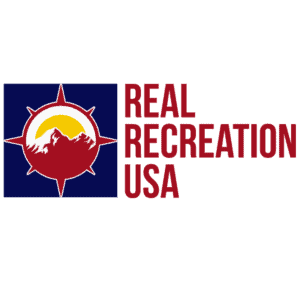Introduction
Every day, thousands of domains expire — we are talking like 150,000+ per day. In fact, according to Digital Information Word, a staggering 70% of all domains are not renewed each year. So just 30% are renewed. Of the domains that were not renewed, 41% do actually expire, while 29% will be purchased/registered by someone else taking over the domain.
Pretty amazing stats — this represents a lot of opportunity to grab high-value domains and reuse them to launch or grow sites for yourself.
Domains expire for a lot of reasons. Sometimes the owner forgets to renew (don't let this happen to you!), they could not make payment, they are no longer in business, they were acquired and merged into another site, they rebrand, etc…
Read on to learn how to use aged domains to your advantage.
What is an Aged Domain?
Anytime a domain owner fails to pay the renewal fee to the registrar, the domain will eventually expire. These domains become available for re-registration and there are folks who monitor these lists daily to snap up any domain that seems to be of value. See the diagram below for details on the domain name lifecycle. Anytime a domain is “available for re-registration,” you have the opportunity to obtain the domain.

Most expired domains have little or no value. But some will have significant SEO value. That is what we are looking for in an aged domain.
An expired domain that has a quality backlink profile or is relevant to your website niche is worth buying.
If you find an expired domain with a good quality backlink profile, it could be a great opportunity. Or, if you see a domain with high relevance to your website niche, it could be worth buying. These domains are highly sought after by SEO companies and are usually purchased quickly — so your best bet in finding these quality aged domains is via a reseller marketplace (see below).
Some expired domains are used for online scams or other types of spammy activity. You want to avoid these. There are tools to help you research the domain history, which we will mention later in this article.
The top rule when using an aged domain is do your research! Understand the domain history and determine its quality based on the metrics we provide below.
Why use an Aged Domain?
There are many reasons to use an aged domain. Some of these are listed below.
Avoid the Google “Sandbox” and Get a Jump Start
Google tends not to trust a brand-new domain for a period of time. This can range from 4 to 6 months. During this time, you will see very little organic rankings and search traffic. Once Google trusts your new domain, and you are out of this “sandbox” period, you'll see rankings improve pretty quickly. So, if you want to build a profitable business fast, this is going to slow you down. An aged domain doesn't go through the Google Sandbox, so you can start ranking much quicker. This alone is a great reason to consider using an aged domain.
Get powerful links without the expensive cost
Backlink building can be time-consuming and costly. Yes, many sites will grow and obtain backlinks naturally without any work. But in today's competitive landscape, most sites engage in some type of backlink building strategy. When you purchase an aged domain, you are getting perhaps years of backlink building that the previous site owner did for just the cost of the domain. This can be a huge cost-saving, not to mention that many of the backlinks could be harder to obtain today. If not impossible. As an example, at Human Proof Designs, we provide a guest post backlink building service and each link is $100 or more. An aged domain with 500 backlinks already built is going to easily pay for the cost of the domain. In addition, you get the power of these links right away — no need to wait while you execute a long-term link building strategy.
Relevant Backlink Profile Already Built
Relevant backlinks are the most important benefit of an aged domain. If your site is in the camping niche, and you can get a link from REI — that is a huge benefit. REI is well known with a Domain Authority of 85+. These types of niche relevant backlinks will jump-start your site rankings and help Google quickly understand what your site is about.
Get Backlinks and Brand Mentions from Publications
Sometimes, you will find that a large organization, such as the Wall Sreet Journal, has written a story about your site and linked to you. When you find aged sites with links or mentions from these high-profile sites, it can dramatically improve your organic rankings. These links can be hard to get — so an aged domain with these types of links can give your site lots of benefits.
High Domain Reputation
Using an aged domain can provide you with a high domain reputation quickly. This helps all of your content rank faster and higher in the search engines. Domain authority is something built over time and you will get this advantage right away.
Domain Age is a Ranking Factor
Finally, the age of the domain is one of the factors Google uses in ranking sites. We consistently see that those sites on page one of Google tend to be 5 years or older. By purchasing an aged domain, you will have better chances of competing for those high-value page 1 Google rankings.
How to use an Aged Domain
After you purchase an aged domain, here are some ways you can utilize it:
- Build a niche authority website – when you purchase a new domain and build a website on it, you have to work much harder to build up the domain authority. And you will be in the “Google Sandbox” for a period of time – which means very little rankings and traffic until Google starts to trust your new domain. With an aged domain, you get immediate domain authority from the existing reputation and backlink profile of the domain! This helps you avoid the Google sandbox, and helps you rank much faster. It is a shortcut to ranking your site.
- Redirect domain to your brand – sometimes it can be hard to find an aged domain that accurately reflects the brand you want to build (or you may have an existing brand/website). In that case, we would suggest finding an aged domain that is relevant to your niche and then doing 301 redirects to your existing domain or website. That tells Google to transfer all the authority and link juice from the old domain to your domain. With this method, you get to use your preferred domain while taking advantage of the aged domain power.
- Buy and sell for a profit – you could find great aged domains and sell them for a profit. This is known as domain flipping and there are a number of marketplaces for selling domains.
What to Watch Out For
Buying aged domains for a new site, and/or using them to redirect to your site, is considered an advanced SEO strategy. Here are some of the things you should watch out for when deciding what to purchase:
Spammy Links
Every site tends to get some spammy links. There are crawlers and robots on the Internet that are constantly scraping and building directory sites or other spammy content and will link to your site. However, there are also sites with bad intent that may link to you. These sites have negative value and can lower the usefulness of an aged domain. You can use tools like SemRush to get metrics on how many toxic backlinks a site has. We can typically disavow these bad links, but when purchasing a domain, I would just move on if the toxic backlink score is too high.
Google Penalties
If the site has previously received a penalty, then it is of no use to us. Site owners who get penalties will typically abandon the domain and register a new domain for their site. So it is a high probability you'll encounter these types of domains. Be sure to check its history. You can use this website to check for a Google ban, or you can also use the AdSense Sandbox Checker. Please note that these checks are not 100%. You won't really know until you get the domain and then look in Google Search Console. It will list any penalties you've actually received. If you do find this with a site you've acquired, just submit a request to reconsider to Google, letting them know you have acquired the site and all issues related to the penalty have been resolved.

Previously Used as a PBN site
Finally, PBNs (public blog networks) are a popular SEO tactic for building links to your money site. However, they typically have low-quality content and low relevancy to any one topic. So avoid these. Check the domain history in Wayback Machine Internet Archive. If it appears to have lots of unrelated articles or doesn't appear to have been a real legitimate site, avoid it.
Google Algorithm Update
The much-feared Google algorithm — a change by Google could have a huge impact on your rankings. Google is very much aware that the industry uses aged domains for the purpose of ranking a new site, or increasing the authority of an existing site. However, there are very legitimate reasons for redirecting a domain or using an expired domain. So Google does not have an issue with this unless it is used in an abusive way. John Mueller at Google says look for when “people are trying to abuse the system by picking up domains that are totally unrelated to what they’ve been working on”. So you have little risk (not zero — but little) as long as you build a site that is closely related to the topics of the original site or indicated by the backlink profile.
Important Metrics when Buying an Aged Domain
To be successful with an aged domain, you need to know what to look for in the domain — this is super important! The success rate of aged domains can be quite low if you don't know what you are doing (good thing you are reading this article!). So here are the most important metrics or attributes to look for when purchasing an aged domain:
- Topical Relevancy of Backlinks – wow — this is the most important aspect to look at. Is the domain backlink profile relevant to the content you want to rank? What I do is look at the backlinks, sort by Domain Authority, and then look at each website link. Do the topics of the linking website have a strong correlation to my site topic? If the niche is guitars, you want other guitar sites in your backlink profile. You can expand that a bit into general topics like music, music education, music equipment, etc… A website that discusses pianos, though, has lower relevancy. And a general news site would have low relevancy. This is not to say that these low relevancy links are bad — sometimes they can be very high authority and helpful. But we need the overall backlink profile to tell a story — and that story should show very quickly what the site is about.
- Age of the Domain – we are looking for established domains that are typically at least 3 years old — ideally more than 5 years old. Numerous studies show that age matters — content ranks better and the first page of Google tends to be filled with sites that are 5 years or older. Don't consider an expired domain that is just a year old with high authority to be a good candidate.
- Number of Referring Domains – typically, a domain will have more authority with a larger count of referring domains. We typically look for domains with at least 50 referring domains. This is a general rule. You also want to consider the quality — just about every site will have some junk backlinks, but ensure you see a significant percentage of quality sites linking.
- Number of Backlinks – The count of backlinks is less important than the count of referring domains, but it is still a factor to be considered. We want sites with at least 100 backlinks. And make sure you don't see a huge percentage of spammy or low-quality links. You can look for things like porn, phishing sites, hacked content, non-English sites, keyword stuffed sites, and duplicate content sites.
- Types of Backlinks — What country are the backlinks coming from? If you are building a USA targeted website, then you want the majority of backlinks to be USA based. We usually look for 50% or more. Also consider other metrics like how many are follow versus nofollow. We want a natural pattern here. There should be some nofollow — if all of them are follow links, it could be a PBN network or some other type of non-natural link building strategy. In addition, you want a mixture of link types — text, images, etc… The more natural the backlink profile, the more likely Google is going to reward your site with authority and rankings.
- Trademarks – the last thing you want to do is invest in an aged domain, build a great website, get lots of traffic, and then have a trademark infringement claim brought against your site. You'll lose all that hard work! Be sure to search trademark databases for the words used in the domain to make sure there are no trademarked words used within the domain. Example: “BestCrossfitTips.com” might seem like a great domain for a fitness site, but CrossFit is a registered trademark. Don't use the domain — you will get sued. You can use the U.S Patent and Trademark Office (USPTO) database to search for trademarks. Their electronic system lets you search by brand name, common alternate spellings, and similar sounding names to find any potential violations.
- Website Quality – when the domain was in use, did it have a quality website built on it? You can check the Wayback Machine Internet Archive to get an idea of what the site looked like.
- Domain Authority – we are looking for sites with a domain authority of 10 or above. Again, just a general rule. Domain authority helps us understand the quality of the backlink profile and how the site compares in authority to the competition.
- Citation Flow – this considers how popular are the websites in the backlink profile. It doesn't consider quality — it looks more at traffic / popularity of the linking websites. We are looking for sites with a citation flow of 10 or higher.
- Search Engine Bans – Be absolutely sure the site hasn't been banned by a search engine — otherwise, none of the advice in this article will work.
- Last Date Site was Active – if a site has been dead or not active for a long time, the backlink profile is likely to have less power. We are typically looking for sites that have been active within the past 2 years — sometimes you can expand that to 3 years if the other stats look great. Use the Wayback Machine to look at the site over time to determine when it was last active. You may also find that the website was down for periods of time. You'll notice then when there are no snapshots of the site for an extended period of time. You want sites that minimize downtime so that the link juice is not significantly affected.

Tools to Find Aged Domains
Here are a few tools you can use to find aged or expired domains. It can take a lot of work — you have to be patient and keep at it.
- Human Proof Designs Aged Domain Packages (the best source, of course!)
- SerpDomains
- SpamZilla
- DynaDot
- DomCop
- ExpiredDomains.net
- DomainCoasters (I find they have better quality than the others)
- Godaddy Auctions
Aged Domains from Human Proof Designs
-
 LightsideGames.com Aged Domain Site$3,498.00 – $9,648.00
LightsideGames.com Aged Domain Site$3,498.00 – $9,648.00 -
 NotCouture.com Aged Domain Site$3,148.00 – $9,298.00
NotCouture.com Aged Domain Site$3,148.00 – $9,298.00 -
 RealRecreationUSA.com Aged Domain Site$2,548.00 – $8,698.00
RealRecreationUSA.com Aged Domain Site$2,548.00 – $8,698.00 -
 PhotographerCafe.com Aged Domain Site$2,448.00 – $8,598.00
PhotographerCafe.com Aged Domain Site$2,448.00 – $8,598.00
Case Studies
Success Story
A great public study done by our friends at Serp.Domains shows just how profitable this strategy can be!
The details:
- Affiliate site in the tech / gaming products niche with How-To tutorials
- Over 90,000 monthly page views
- Earning $3,500 / monthly
- Built on an aged domain
- Mix of review-based articles and information-based articles
- Published 2 or 3 articles per week and word count between 2500 to 4000
- Adding links through guest posting links
- Huge growth occurred within a couple months. First articles went live in mid-December, and revenue started in February.
- Total cost for domain and content was just under $6000
Stats and growth after site launch:


Great growth in under 6 months!
Mixed Success Story (with a twist)
This is really an amazing story! With a few twists. This deals with the site Freedom251.com. This was originally created in 2016 for an Indian company offering the world's cheapest smartphone. The phone was offered at a promotional price in mid-February 2016. Traffic was so high on the website that it crashed the first day. It garnered tons of attention, went viral, and gained thousands of backlinks.
At the site's peak, it had over 10,000 referring domains and 188,000 backlinks. And during the initial ownership of the domain, it had 45,000 monthly search volume.
You can learn about the history of this site from Wikipedia.
The site was shut down for 2.5 years (2017 through mid-2019), expired, and a new owner picked up the domain around March 2019.
The new owner started up an Amazon affiliate site focused in the technology niche — particularly laptops.
Here were the results:

That is some crazy growth! Within six months, it had grown to over 280,000 monthly volume and likely earning five figures a month. The new site had some topical relevancy — original site in cell phones, and the new site in laptops. Technology related.
So what happened? Site traffic and rankings tanked in December 2020.

It appears this site was hit with either a Google penalty or the December 2020 algorithm update (which dealt with link relevancy).
Our analysis — this site had nearly 100% traffic from India and Saudi Arabia. The new site was targeting mostly a USA audience. This was a big red flag — Google would have eventually caught this. The site should not have been used for a USA-based affiliate. Another issue — we have seen this happen before. Sites based on a single product or single keyword are typically not a good candidate for a new website. With the India/Saudi audience, targeting USA traffic, and changing the niche, the site was at extreme risk. While there was some topical relevancy, moving from a single cellphone product offering to a site around laptops reviews would cause an issue. This site also had some legal issues related to the original site and product — you can read more about that in the Wikipedia article.
Now for the twist — the site is back and going strong! After almost a year of no traffic, the owners have redirected freedom251.com to laptop251.com (this domain is new – created in October 2021). This new domain doesn't suffer from the same history of freedom251, and appears the freedom251 domain is recovering and sending the link juice over to laptop251. Freedom251 is using a 301 redirect over to laptop251. Here are the stats for laptop251:

Wow! What a recovery! Laptop251 is at almost 300,000 monthly volume again within two months of starting over. This is such a good example of the power of domains. Now, I would not suggest you take the risky path this owner has. Do your research and you'll have a less stressful journey. But, this owner has used SEO to his advantage and is making lots of profit along the way.
Takeaway: Research aged domains and follow the guidance in this article — it will save you headaches down the road.


I bought an old domain at the age of 17. (By making a transfer transaction!)
It is not a domain with backlink values, but the spam score is 22%, I performed transactions by redirecting 2 domains of my own to 301.
Is there anything else I need to do?
I got an aged domain few days ago, after purchasing and start building site, i noticed that google is not indexing the site. is there any way to fix site that some how blocked by google?
Give it some time — Google likely won’t index it within a couple days. Also check Google Search Console to ensure no penalties or other issues.